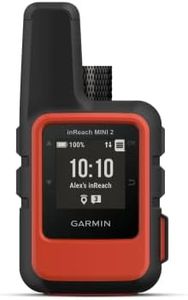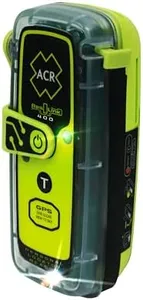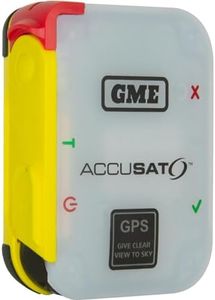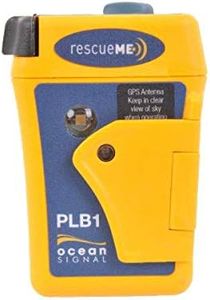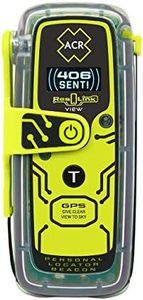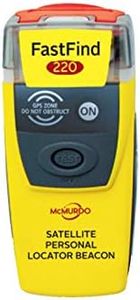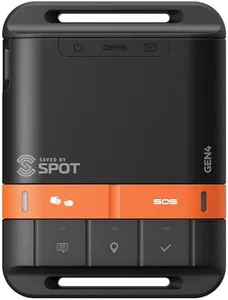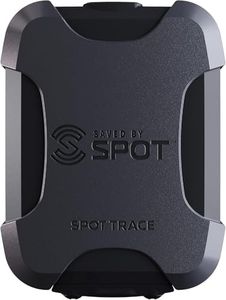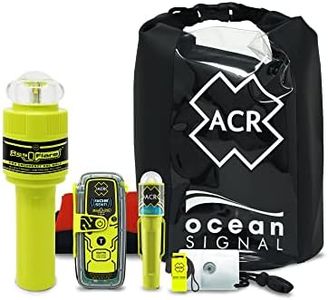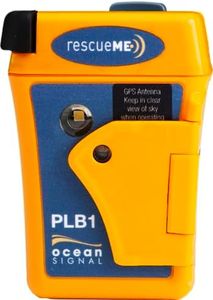We Use CookiesWe use cookies to enhance the security, performance,
functionality and for analytical and promotional activities. By continuing to browse this site you
are agreeing to our privacy policy
10 Best Personal Locator Beacons
From leading brands and best sellers available on the web.Buying Guide for the Best Personal Locator Beacons
Choosing a personal locator beacon (PLB) is an important decision for anyone who spends time in remote areas, whether for hiking, boating, or camping. A PLB is a safety device that sends a distress signal and your exact location to emergency services when activated. The right PLB for you will depend on the types of adventures you take and how much security or convenience you want. Understanding the main features and how they impact use will help you find the best fit for your needs.Battery LifeBattery life in a personal locator beacon refers to how long the device can operate once activated and how long the battery can last before it needs replacement. This is crucial because in an emergency, you need your beacon to function until you are rescued. PLBs often have batteries that last for multiple years without use but will transmit signals continuously for at least 24 hours once activated. Shorter battery life is acceptable for day trips, but longer life is better for extended outings or remote adventures. Choose a PLB with battery specs that comfortably cover your typical trip durations and remember to check battery expiry dates regularly.
Satellite NetworkThe satellite network used by a PLB is what connects your signal to emergency responders. Most PLBs use the Cospas-Sarsat system, which is recognized globally and operated by multiple countries for maximum coverage and reliability. This is important because it ensures your distress call can be received almost anywhere in the world. When evaluating PLBs, confirm that it uses a reputable, internationally recognized satellite network so that you're protected wherever you travel.
Location AccuracyLocation accuracy describes how precisely the beacon can broadcast your position to rescuers. Some PLBs use GPS receivers to send very specific coordinates, while others only give a general location. Higher accuracy means faster and more precise rescues, especially in challenging terrain. If you travel in remote, hard-to-find locations, look for a PLB with built-in GPS for the best accuracy. For less remote activities, standard accuracy may suffice, but GPS-equipped devices provide more peace of mind.
Size and WeightSize and weight determine how easy the PLB is to carry with you. Lighter and smaller beacons are easier to keep on your person at all times, making it more likely you’ll have your device when you need it. Larger beacons may offer additional features but can be more cumbersome. For minimalists or those on long treks, look for compact, lightweight designs you can attach to a backpack or belt comfortably. For boating or vehicle use, size and weight are typically less critical.
Waterproof RatingWaterproof rating shows how well the beacon can resist water entry. This is especially important for boaters, kayakers, or anyone who might get caught in rain or wet conditions. Ratings are usually given by depth and duration (such as being submersible up to a certain number of meters for a specific time). If your activities involve significant water exposure, choose a higher waterproof rating to ensure your PLB continues to function when wet.
Ease of ActivationEase of activation refers to how simple and quick it is to trigger the beacon, especially in stressful situations. Some beacons use sliding covers or two-step buttons to prevent accidental activation. When evaluating this, imagine an emergency where you need to use the beacon with cold, wet, or gloved hands. Select a PLB that you can confidently activate under those circumstances, balancing safety lock features with straightforward usability.
Strobe Light/Visual SignalSome PLBs include a built-in strobe light or other visual signal for rescue teams to spot you more easily, especially at night or in low-visibility conditions. This extra feature can make a big difference if you expect to be in situations where finding you visually could be challenging. Consider a beacon with this feature if you plan activities in heavily wooded, mountainous, or night-time environments.
